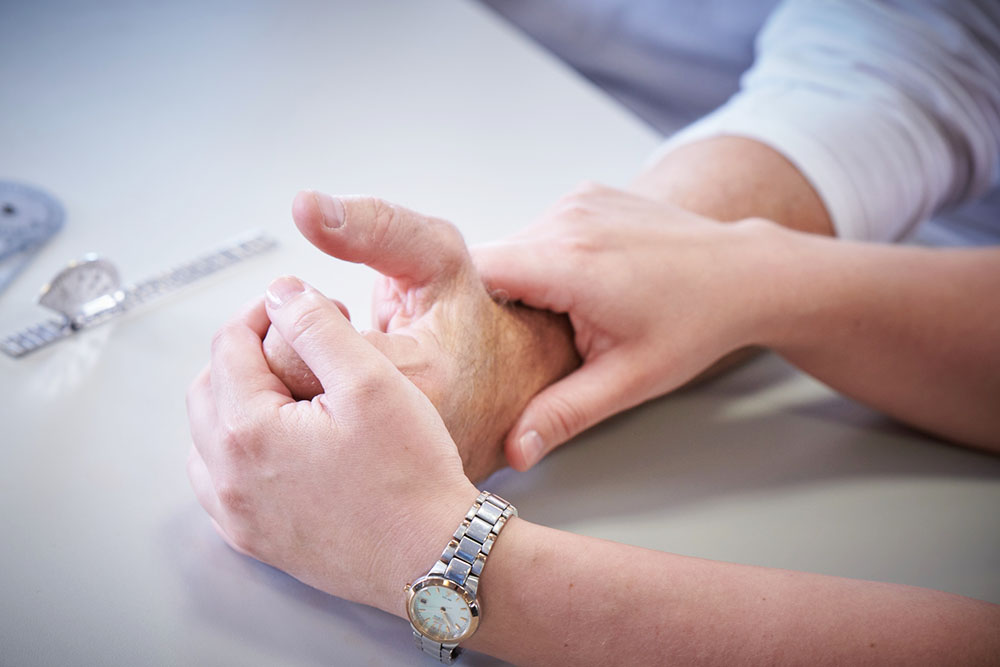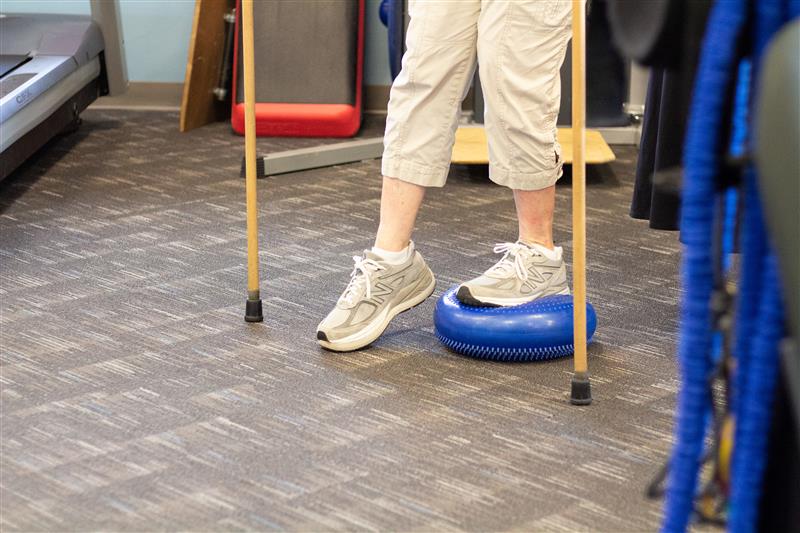You’ve been playing your favorite video games for a few hours, and suddenly, you notice your thumb is sore. What’s going on? You may be suffering from Gamer’s Thumb.
What is Gamer’s Thumb?
Gamer’s thumb is the informal name for a medical condition called de Quervain’s Tenosynovitis.
De Quervain’s Tenosynovitis is a health problem in which the tendons in the thumb that control movement become inflamed. This inflammation causes pain and limited mobility and often occurs after excessive and repetitive movement.
Gamer’s thumb is a version of de Quervain’s Tenosynovitis, where the repetitive stress injury is caused by playing video games.

What Are Gamer’s Thumb Symptoms?
Worried that you have Gamer’s Thumb? Look for these common symptoms:
- Pain in your thumb after video game sessions
- Pain when you turn your wrist, grab something or make a fist
- Pain in your wrist after gaming that may travel up your arm
- Pain and/or swelling at the base of your thumb
- Any thumb or wrist pain that increases with movement
What are the Risk Factors for Gamer’s Thumb?
In addition to playing video games for extended periods of time, risk factors for this condition include:
- Jobs that involve repetitive motion in the hand and wrist
- Being between the ages of 30 and 50
- Being female
- Pregnancy and infant care
What is Gamer’s Thumb Injury?
Excessive gaming can also cause other repetitive stress injuries. In addition to Gamer’s Thumb, or De Quervain’s Tenosynovitis, gaming injuries that often occur are:
- Tennis elbow
- Trigger finger
- Gamer’s neck
- Gamer’s back
- Carpal tunnel syndrome
Can You Avoid Gamer’s Thumb?
The best way to avoid Gamer’s thumb is to play video games for shorter periods and limit repetitive movements that stress your thumb and wrist tendons. This can be difficult for serious gamers and those working in fields requiring these types of movement. Taking frequent breaks, and stretching before, during, and after gaming sessions or work, can help prevent the syndrome. Also, consider speaking with a Hand Physical Therapist or rehabilitation specialist to discuss proper equipment setup and ergonomics.
Which Thumb Stretches Should I Try?
Here are three stretches for gamers that can help prevent injury and can be performed before, after, or during breaks while playing.
1. Wrist flexion stretch
- Place arm straight out in front of you with palm facing down.
- Bend the wrist downward as far as possible, keeping the elbow straight.
- For added stretch, push the wrist further into a bent downward position using your opposite hand.
- Hold for 10 seconds and repeat ten times.
2. Wrist extension stretch
- Place your arm straight out in front of you with the palm facing up.
- Bend the wrist upward as far as possible, using the aid of the opposite hand, making sure to keep the elbow straight.
- Hold for 10 seconds and repeat ten times.
3. Tendon glide
- Place the arm straight out in front of you with the thumb side up.
- Place your thumb into a resting position on top of your index finger.
- Bend the wrist down towards the floor, keeping the thumb on top of the index finger.
- Hold for 2 seconds and repeat ten times.
If I Have It, What Gamer’s Thumb Treatment Can I Try?
In addition to the stretches above, there are many treatments that you can try to relieve Gamer’s Thumb:
- Rest
- Splint or brace
- Over-the-counter anti-inflammatory medication
- Physical therapy
- Steroid injections
- Surgery

How Can Physical Therapy Help Gamers Thumb?
A physical therapist/hand therapy specialist can work with you to tailor an exercise routine designed to relieve your symptoms and prevent injury recurrence. Treating repetitive use injuries can be tricky since too much activity can be as detrimental as not enough. Working with a professional therapist ensures that you will do the right exercises for the right amount of repetitions. Therapists will also provide insight into proper equipment ergonomics and ways to control and prevent overuse and inflammation.
Involving formal physical therapy in your treatment plan can also help you avoid more invasive treatments such as steroid shots and surgery. Should surgery become necessary, following up with physical therapy can promote a full recovery. It can also help you learn the techniques you’ll need to ensure the injury does not recur.
If you are located in the Tucson area and are concerned that you might have Gamer’s thumb, contact the professionals at ProActive Physical Therapy to request an appointment.
We recognize the importance of living life functionally and pain-free. Our objective is to provide a positive, energetic, and healing environment that gets you back to the activities you love. Contact us today to set up an appointment at one of our convenient locations. Your recovery starts here.



